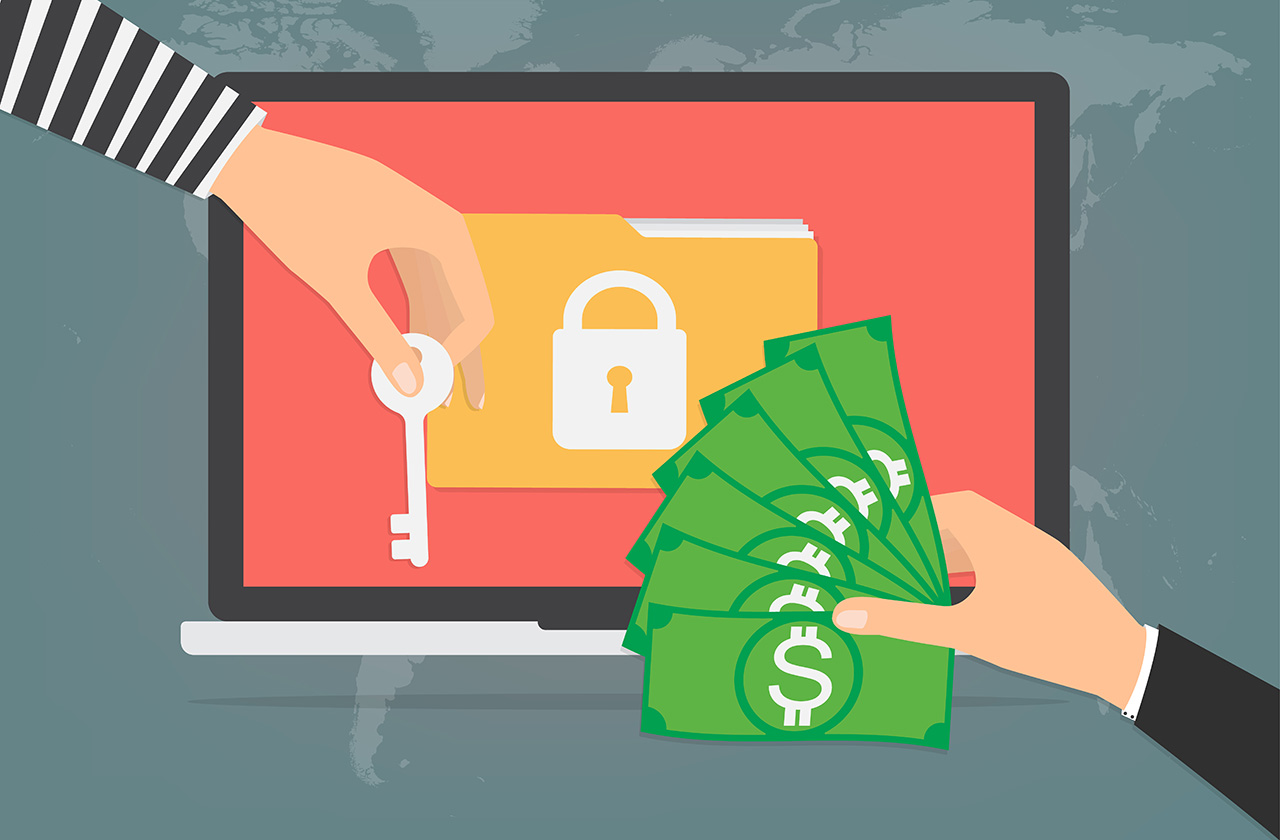
Ransomware: 5 Dos and Don’ts
Ransomware has been an especially troublesome kind of malware for more than a decade now.
In the past 3-5 years, millions of people have been infected with it causing billions of damages in dollars.
Even after all of this, millions of people remain in the dark. People who still don’t know how to protect themselves from this.
Are you one of them? Then you came to the right place. This article will enlighten you on what you need to do to protect yourself and what you shouldn’t do.
Summary
All in all, Do:
- Use Security Programs
- Keep Backups
- Use your Head
- Keep your Computer Updated
- Keep Yourself Updated
Don’t:
- Panic
- Pay the Ransom
- Click on Suspicious Links
- Use Unknown Thumb Drives
- Connect to Private Networks
Do use Security Programs
The ideal configuration is using one Antivirus and one Anti-Malware. The two of them detect different kinds of threats which is why that security setup is recommended.
Yes, using two Antivirus programs or two Anti-Malware ones could be bad for a computer because of interference and performance drops.
However, using one Antivirus and one Anti-Malware is fine. As for which ones to choose, I personally use Windows Defender as my Antivirus and MalwareFox as my Anti-Malware.
Do Keep Backups
Following all the safety steps here should ensure your safety. But, as they say, “better safe than sorry.”
Backups are needed just in case that something goes wrong. There are programs that can backup your whole Operating System as it is and restore it to the exact same condition.
If you are not willing to backup the whole OS, then at the very least do backup your important files.
And it doesn’t have to be about Ransomware. Files can get lost because of a power loss, an HDD/SSD failure, etc. Which is why backups are essential.
Do use your Head
Cybercriminals will often try to fool us into infecting our computers by using phishing/scam methods. Using your head will help you avoid things like that.
For example, if you get an email with a weird title and a MS Word which requires Macros to be enabled, then get the hell out of there.
Why? Because Ransomware often uses MS Word Macros to execute its malicious code. The fact that the title looked fishy, is just one more reason to stay away from that email.
By fishy titles, we mean things like “Invoice for your payment, congratulations, you won, etc.” Titles that tempt you to open the email.
Do pay attention to such things.
Do Update your Computer
The Wanna Cry Ransomware was the first Ransomware which utilized a security exploit in older versions of Windows to infect people. Seemingly out of nowhere.
It was the first Ransomware to do that and it won’t be the last. Do keep your computer updated to stay safe.
Again, that doesn’t only protect you from Ransomware, but from other kinds of malware as well.
Do Keep Yourself Updated
Knowledge is power. Read the news. Get a general knowledge of how Ransomware works and infects people. It might save your computer and your files.
For example, knowing that Ransomware often uses Macros to execute its malicious code, will heighten your awareness in case that you get asked to enable Macros in an unknown MS Word file.
And that’s all about the dos. Now, the don’ts.
Don’t Panic
In case that you get infected, there is nothing more important at that moment than keeping a calm head.
Panic will make you follow the wrong path. Like paying the ransom. I’ll explain why that is wrong momentarily.
Just stay calm. Look for file restoration guides, ransomware removal guides, anything that might help you.
Don’t Pay the Ransom
The cybercriminal promises to give you your files back if you pay the Ransom. Don’t fall for it.
You’re dealing with a criminal. Why would you trust him/her? There is no guarantee that you’ll get your files back and the price is rather big to pay.
As if that wasn’t enough, you will also be promoting the criminal’s “business”. Which, in turn, will create more Ransomware victims.
Don’t Click on Suspicious Links
The same applies to emails, ads, etc. A suspicious link could be anything from slghaoguggesfgs.com to fasebook.com/login.
A suspicious email could be anything from “here’s your payment” to “you just won this iPhone X”. Same goes for ads or anything for that matter. You get the big image.
Suspicious stuff like that is often the backdoor to malicious programs and scams. Stay away from them.
Don’t use Unknown Thumb Drives
You’re returning from work, and you find this USB thumb drive lying on the floor. Of course, you pick it up. It’s free stuff, right? Wrong!
That’s a method that cybercriminals use to infect people with malware. They store the malware on the thumb drive and then they leave it somewhere, hoping that someone will pick it up and fall into the trap.
It rarely gets used for Ransomware infections because even the cheapest of thumb drives do have a small price tag on them. Still, the saying “better safe than sorry” applies here too.
Don’t Connect to Private Networks
Private networks make your PC discoverable and allow for files to be exchanged. That makes you vulnerable to malware.
Some people do need a private network as there are features and programs that require it. The Remote Desktop feature of Windows is only one of them.
If you don’t need a private network configuration, then stick with the public one. It’s more secure and you won’t notice a difference.